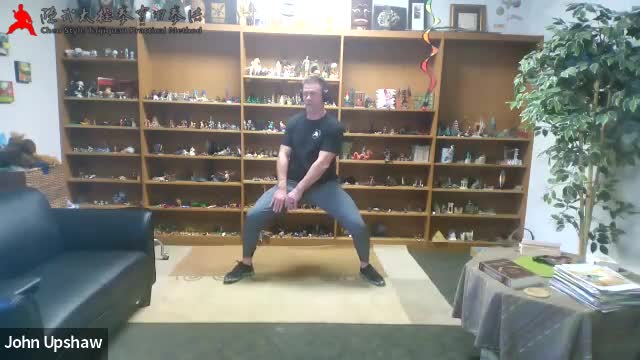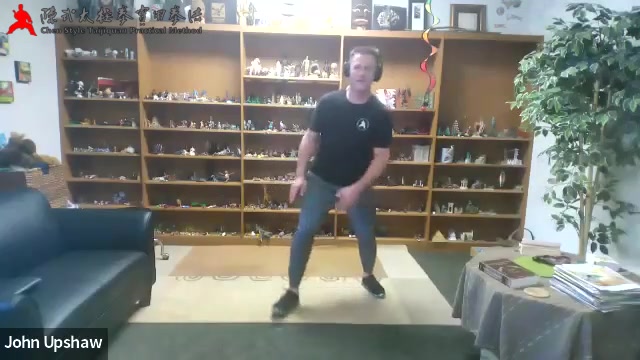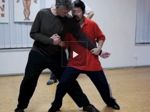
Presenter: Chen Zhonghua Length: 63 mins Difficulty: 3/5 Language: English
Year: 2022 Location: Edmonton, Canada
If you like this video, there is an even greater value in purchasing one of the packages below.
Purchase 2022 Full Year Online Class Video Package
NOTE:
- Video packages are designed for the convenience of students.
- Some packages are in fact classifications of videos.
- Some videos in packages might have been published and purchased by you individually.
- Average prices of videos in packages are considerably lower than individual videos. The number of videos in the package will increase until the sum of all individual video prices equal to two times or more of the package price.
- In view of this, if you have purchased a video that are also included in a package your have purchased, or vice versa, we will not give refunds or equivalents.
- All videos in packages are paid videos. They are restricted to your personal viewing and other usage. You do not have copyright of the videos and therefore you do not have permission to give/share with others.
- Please note that as a customer/user of the website and/or student of Chen Zhonghua, you have given him and the companies/organizations he represents permission to use videos or photos with you, both personally and commercially.
- Making a paid purchase constitutes agreement to the above terms.






{ 1 comment… read it below or add one }
*** Personal notes on the video instructions ***
– All pinyin is written in full capitals with tone indicated as a number following it (easier to lookup if you want the corresponding character later).
– The notes below are a reflection of the notes I take during class, shared here to incentivize people to watch the video, and do not in any way constitute a replacement for it.
– Basically the entire lesson is a GOLDEN NUGGET 🙂 but this is a highlight:
– Many choreography mistakes arise from pushing forward and not doing the hinge-like movement in-place.
Acronyms used in the notes:
– LF = Left foot
– RF = Right foot
– LN = Left Knee
– RN = Right Knee
– LL = Left Leg
– RL = Right Leg
– LK = Left KUA4
– RK = Right KUA4
– LH = Left Hand
– RH = Right Hand
– LE = Left Elbow
– RE = Right Elbow
– LS = Left Shoulder
– RS = Right Shoulder
– LA = Left Arm
– RA = Right Arm
– CL = Chest centre line
– TH = Top of the head
– PC = Positive circle
– NC = Negative circle
– CB – Shovel Out / Shovel Step (CHAN3 BU4)
– XMB – Small horse stance (XIAO3 MA3 BU4)
– ZMB – Left horse stance (ZUO3 MA3 BU4)
– YMB – Right horse stance (YOU4 MA3 BU4)
1. Digression
1. Discussion on instructions and how to people interpret it in different ways
2. Sometimes we over-complicate: many times it’s just a simple movement (and that’s OK!)
1. Maybe a cultural barrier?
2. Physical Exercise – a upper-lower body twist to take a cap
1. Lock LN and RN – Do not let them go forward nor sideways (as if there is a wall in front and sideways)
1. IMPORTANT: knees are not frozen, not fixed, only touches the wall and does not
2. Move LK to the RK
1. Causes LL tight to elongate
2. Causes torque, a drilling down motion like screwing a cap on a bottle
3. Comments:
1. When doing push hands, the motion of the KUA in this twisting is bottle cap is what gives and allows movement (if you can’t do it, then you end up losing)
2. At the beginning stability comes from pressure, later it becomes a consequence of separation.
3. Example:
1. Doing the exercise with the knees on the couch (which allows some give in the knees unlike in a wall)
1. This is a higher level version of the exercise
1. lowest level = direct power (1-1 power ratio)
2. higher level = several levels of indirection (higher lever ratio)
1. You can apply the lever if your stick can withstand the pressure
2. This is where “4 ounces moves a thousand pounds” (四两拨千斤) say comes from (sure, it takes 4 ounces but the lever itself needs to be able not to break)
2. Tying a sandbag to a cord in the waist then rotate. The centrifugal force in the rotation lifts the bag (power).
3. Doing th exercise with a partner holding a stick in front of your knees for reference
4. PENG2 is what makes each one piece that moves together (so you don’t wobble)
5. This exercise’s principle is the same as in
1. Walk Obliquely in YI1LU4
1. Lock LS-LK in kick
2. Land and fold like this exercise
2. Turn flowers on the bottle of the sea
1. Turn on the same place
3. Multiple choreography errors in YiLU arise from pushing forward rather than doing this hinge-like movement
1. No lock -> many adjustments -> no center -> no rotation takes place
2. Just rotation -> no adjustments -> no telegraphing the move and greater power!
3. Personal reflections
1. It is probably a good idea to practice this filming myself and look for the rotation